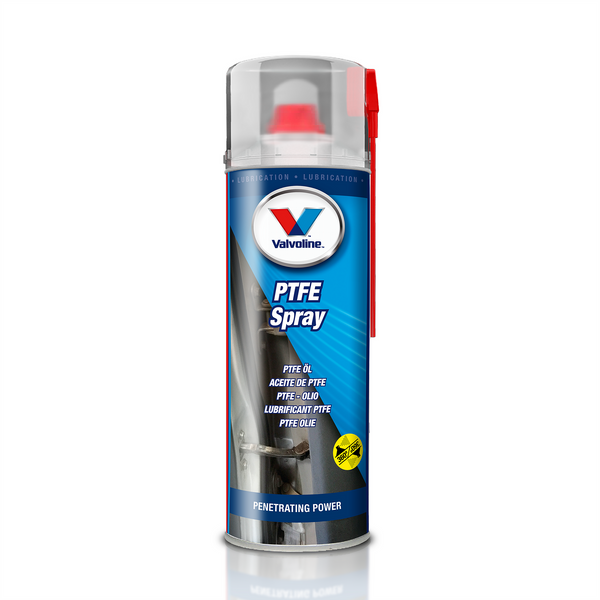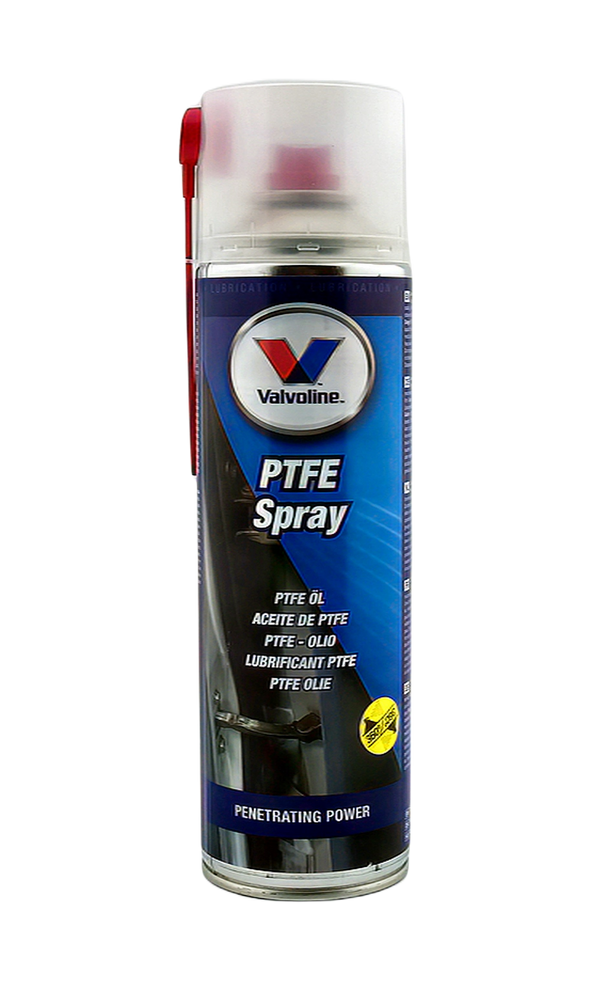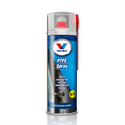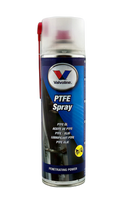Valvoline™ PTFE Spray 500ml
High quality lubricant for mechanical parts made of metal and plastic.
PTFE spray is designed to provide protection in a wide range of operating conditions and temperatures from -50°C to +250°C.
It performs well in demanding operating conditions thanks to its exceptional mechanical and thermal stability.
Application:
Suitable for use in many workshop and agricultural applications.
- Chains
- Door hinges
- Rails
- Sliding door guides
- Agricultural machinery)
- Gears
- Industrial vacuum pumps
- Conveyors
- Rubber seals
- door locks
- seatbelts
- seat rails
Features and Benefits:
- Excellent mechanical and thermal stability
- Very low coefficient of friction
- Excellent penetrating and adhesive properties
- Prevents wear and jamming
- Resistant to weather conditions
- Resistant to weak acids and bases
- Fine structure (particle size approx. 5 microns)
- Hydrophobic
- Directed spray jet
- Prevents sticking
Technical data
| Base |
Synthetic oil |
| Properties | contains PTFE |
| Volatile organic compounds (VOC) content |
about 60% kg/kg |
| Color | transparent white |
| Density at 20 °C |
0.88g/ml |
| Steam pressure at 20 °C |
3 to 4 bars |
| Thermal resistance | -50 to +250 °C |
| 4 ball wear test (ASTM D-2266) |
<0.4mm |
| EP 4 ball test (ASTM D-2596) | 3430N |
| pH value | neutral |
Application method:
Valvoline™ PTFE Spray should be at room temperature before use. The technological temperature should be between 5 and 30°C. Shake before use. Apply Valvoline™ PTFE Spray thinly. Optimum lubrication will be obtained after evaporation of the solvent.
Product title
Vendor
19,99 zl PLN | 24,99 zl PLN
Product title
Vendor
19,99 zl PLN | 24,99 zl PLN
Product title
Vendor
19,99 zl PLN | 24,99 zl PLN
Product title
Vendor


































